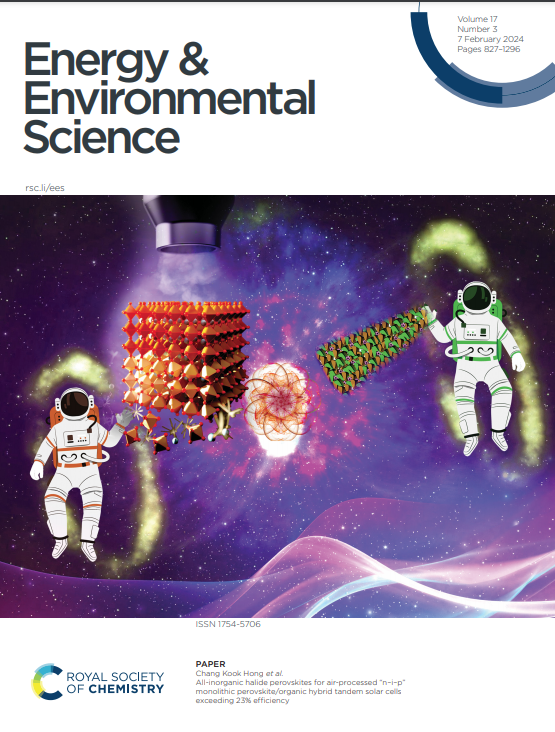Solvent-additive cascade engineering enables single-oriented perovskite films with facet-driven performance and stability
IF 30.8
1区 材料科学
Q1 CHEMISTRY, MULTIDISCIPLINARY
引用次数: 0
Abstract
Facet engineering is an important strategy for enhancing the efficiency and stability of perovskite devices. However, the formation of high-quality, tunable crystal facets remains a challenging endeavor. Here, we employed a novel solvent-additive cascade regulation (SACR) strategy to create homogenous orientations via a two-step method. Mechanistic analysis reveals that solvents drive orientation via topochemical assembly, while additives regulate specific facet growth through differential bonding intensities with crystal nuclei. With the SACR method, we successfully obtained perovskite films with homogeneous (111) and (100)-oriented facets following the Wulff construction rule. The resulting n–i–p structured devices achieved optimal efficiencies of 23.32% and 25.33%, respectively. Notably, the (100)-oriented devices exhibited superior photoelectric performance, whereas the (111)-oriented devices demonstrated better long-term stability. This work underscores the critical role of facet engineering in tailoring the optoelectronic properties and structural stability of perovskite films, offering a viable pathway toward efficient and durable perovskite solar cells.

溶剂添加剂级联工程使单取向钙钛矿薄膜具有facet驱动的性能和稳定性
Facet工程是提高钙钛矿器件效率和稳定性的重要策略。然而,形成高质量的,可调谐的晶体面仍然是一个具有挑战性的努力。在这里,我们采用了一种新的溶剂-添加剂级联调节(SACR)策略,通过两步法创建均匀取向。机理分析表明,溶剂通过拓扑化学组装驱动取向,而添加剂通过与晶核的不同键合强度调节特定的面生长。采用SACR方法,我们成功地获得了具有均匀(111)和(100)取向的钙钛矿薄膜,并遵循Wulff结构规则。所得到的n-i-p结构器件的最佳效率分别为23.32%和25.33%。值得注意的是,(100)取向器件表现出优越的光电性能,而(111)取向器件表现出更好的长期稳定性。这项工作强调了面工程在调整钙钛矿薄膜光电性能和结构稳定性方面的关键作用,为高效耐用的钙钛矿太阳能电池提供了一条可行的途径。
本文章由计算机程序翻译,如有差异,请以英文原文为准。
求助全文
约1分钟内获得全文
求助全文
来源期刊

Energy & Environmental Science
化学-工程:化工
CiteScore
50.50
自引率
2.20%
发文量
349
审稿时长
2.2 months
期刊介绍:
Energy & Environmental Science, a peer-reviewed scientific journal, publishes original research and review articles covering interdisciplinary topics in the (bio)chemical and (bio)physical sciences, as well as chemical engineering disciplines. Published monthly by the Royal Society of Chemistry (RSC), a not-for-profit publisher, Energy & Environmental Science is recognized as a leading journal. It boasts an impressive impact factor of 8.500 as of 2009, ranking 8th among 140 journals in the category "Chemistry, Multidisciplinary," second among 71 journals in "Energy & Fuels," second among 128 journals in "Engineering, Chemical," and first among 181 scientific journals in "Environmental Sciences."
Energy & Environmental Science publishes various types of articles, including Research Papers (original scientific work), Review Articles, Perspectives, and Minireviews (feature review-type articles of broad interest), Communications (original scientific work of an urgent nature), Opinions (personal, often speculative viewpoints or hypotheses on current topics), and Analysis Articles (in-depth examination of energy-related issues).
 求助内容:
求助内容: 应助结果提醒方式:
应助结果提醒方式:


